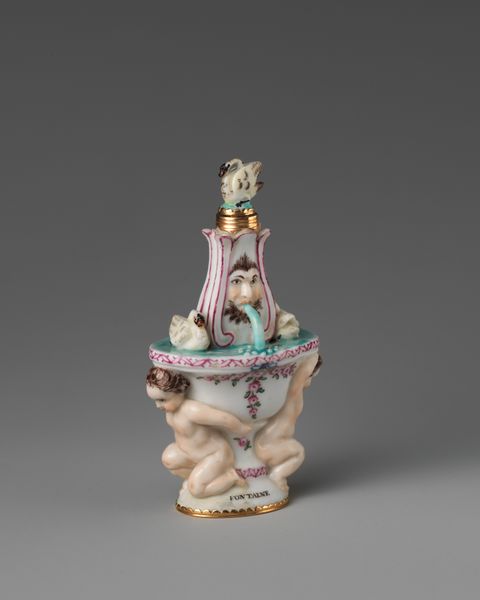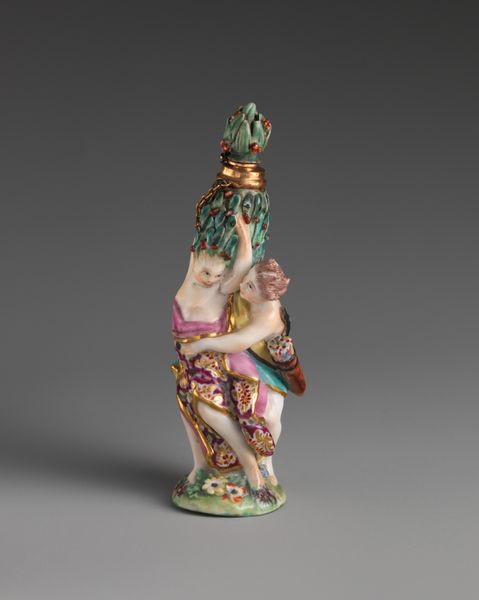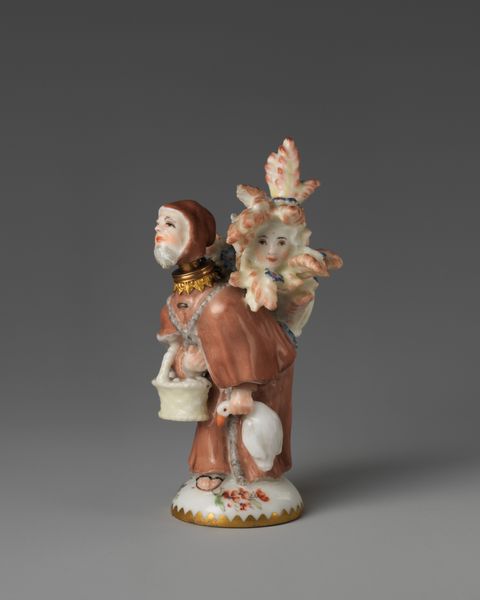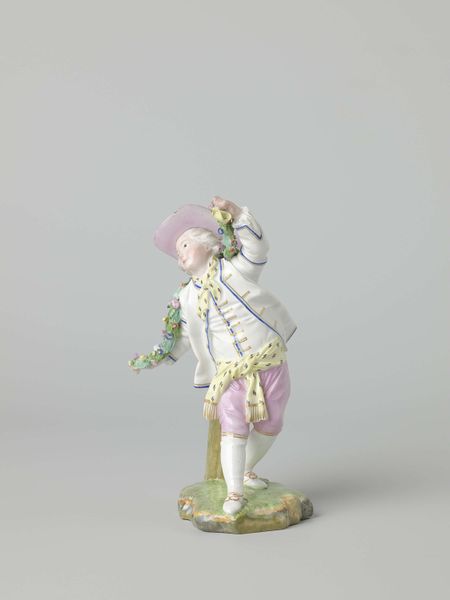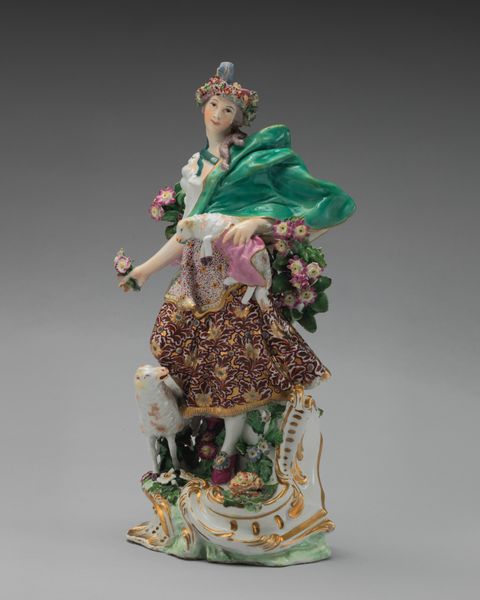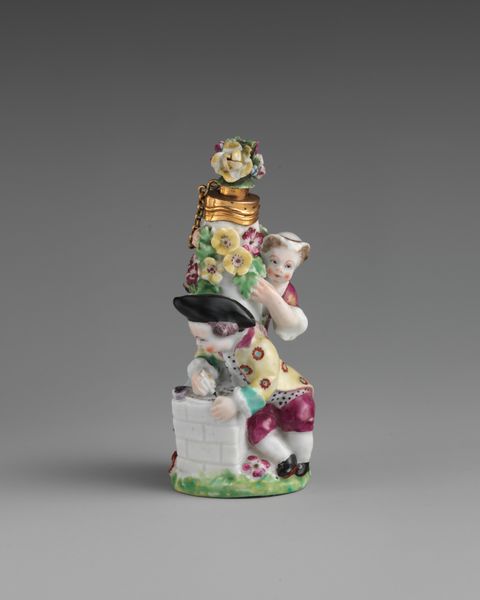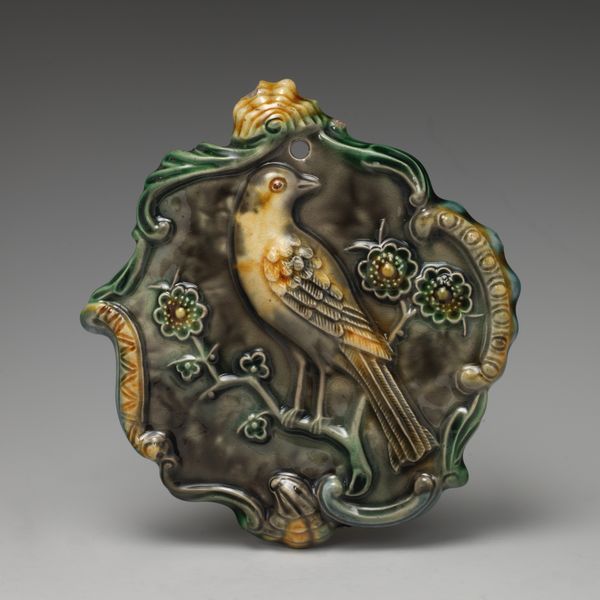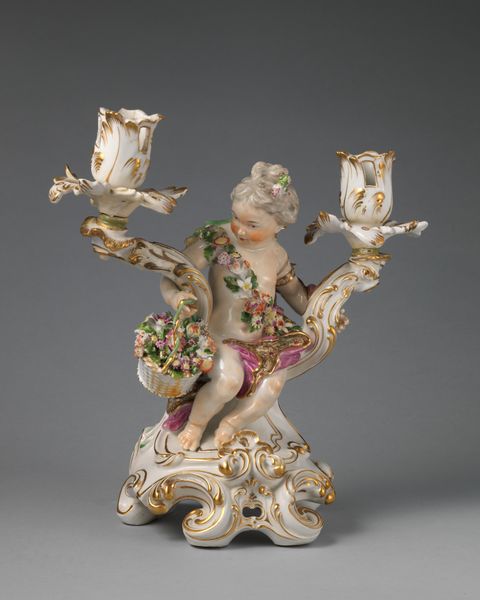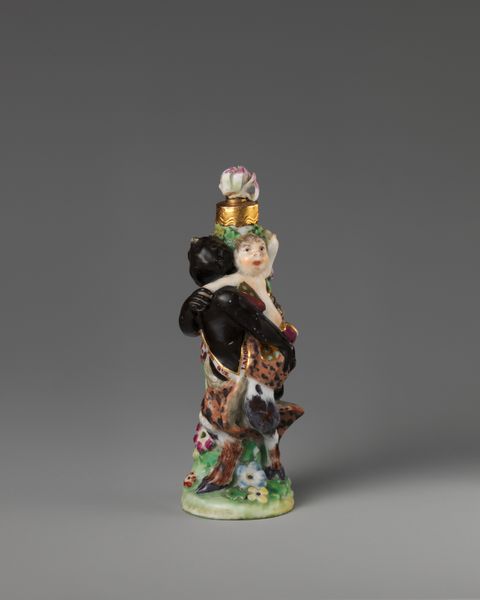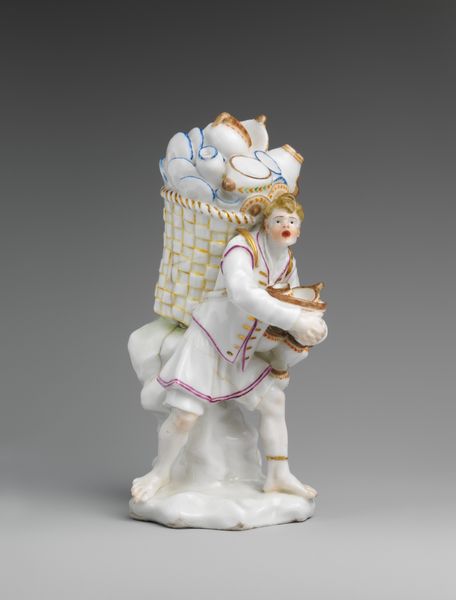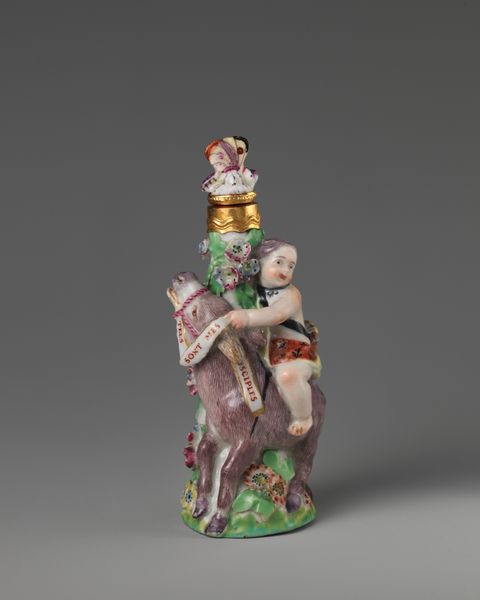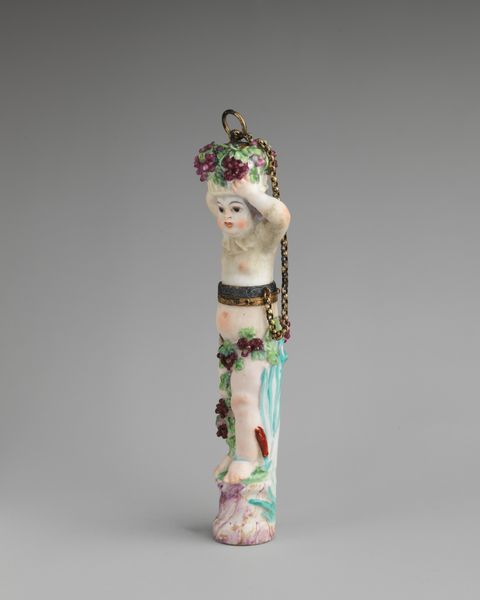
ceramic, porcelain, sculpture
#
ceramic
#
porcelain
#
figuration
#
sculpture
#
men
#
decorative-art
#
rococo
Dimensions: Overall: 6 1/8 × 6 3/4 in. (15.6 × 17.1 cm)
Copyright: Public Domain
Editor: Here we have "Three Dancers," a porcelain sculpture crafted between 1758 and 1768 by the Ludwigsburg Porcelain Manufactory. It feels so delicate and airy! I’m curious about what stands out to you most in this piece. Curator: It’s fascinating to consider this object in terms of production. This wasn't simply art, it was manufactured. Porcelain at this time was a luxury item, often associated with wealth and power. Think about the labor involved in the mining of the raw materials, the specialized knowledge required for the porcelain production itself. Editor: So, you’re focusing on the 'how' it was made, and who was making it? Curator: Exactly! And the "why." Who was the intended audience? Was it purely decorative, or did it serve a symbolic function within a wealthy household? Was it challenging established aristocratic themes, or simply reiterating them in an elaborate form? The rococo style here would have been very popular. Editor: I see. The figures themselves seem idealized, not 'real.' Does that tie into your materialist reading? Curator: Definitely. Their polished surfaces and extravagant garments draw attention to the resources needed to achieve such artistry, while simultaneously concealing the labour necessary to create them. Porcelain production demanded strict quality control as such high material and labour costs wouldn’t have been squandered on pieces with the slightest imperfection. Editor: So, a materialist perspective shifts our focus from the artistic inspiration to the tangible elements of its creation. Curator: Precisely. It helps us understand art not just as aesthetic achievement, but as a product of social and economic forces. Hopefully next time you encounter art, you will contemplate both how and why it was made. Editor: This really broadened my understanding. I will remember to think more deeply about what these objects tell us about the material conditions that allowed them to exist!
Comments
No comments
Be the first to comment and join the conversation on the ultimate creative platform.
